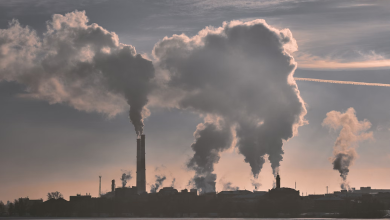Is climate change making insurance too expensive? There are other factors to blame.

Floods, storms, bushfires and several other extreme weather events triggered by the raging climate crisis are causing unprecedented damage across the globe, forcing a number of insurance companies to increase their premiums.
The basic logic behind insurance is that many people sign up but only a handful of them suffer losses and receive compensation. But if an increasing number of people are hit by losses, insurers have to pass on the risk and increase premiums for insurance holders.
Essentially, “if there is more damage, someone has to pay for it,” said Ernst Rauch, a climate expert at Munich Re, a prominent reinsurance company. Since several previous events have proven too costly, insurance companies have passed on some of their risk to reinsurers.
Rising climate insurance claims making firms sceptical
Climate change is responsible for a shrinking field of insurance companies. State Farm, a major name in the industry, has stopped selling insurance policies in California, citing the increasing risk of catastrophes, steep construction costs and a challenging reinsurance market.
Over the past decades, insurance companies in the US state had to cover between $1 billion to $3 billion in damages, Ernst Rauch at Munich Re told DW. But currently, annual insurance claims have jumped beyond $10 billion, he added.
Other parts of the globe have also been hit by increasingly extreme weather events that cause serious destruction. “The amount of insured damage resulting from natural disasters now annually totals around $100 billion worldwide,” the climate expert further mentioned.
Climate change-led damage only partially responsible
More frequent natural disasters triggered by climate change are only part of the problem. Rauch said socio-economic factors play a bigger role. The value of buildings is increasing, global population is rising, and construction is still taking place in vulnerable areas like coastal regions.
Moreover, the actual amount of damage caused is much greater because not everything is covered by insurance. In fact, the climate expert stresses that only 50% of all natural disasters on the planet are covered at all. There is more to the problem.
US authorities do not allow insurers to increase premiums to reflect deepening risks. This could be the reason State Farm decided to leave California. In the long term, certain regions may find it impossible to get insurance coverage even if insurers are allowed to charge anything.
Read More:
Climate change proving costly. Let’s assess its impact on US citizens
Peoples’ Climate Vote 2024 highlights global community’s opinion on climate change



